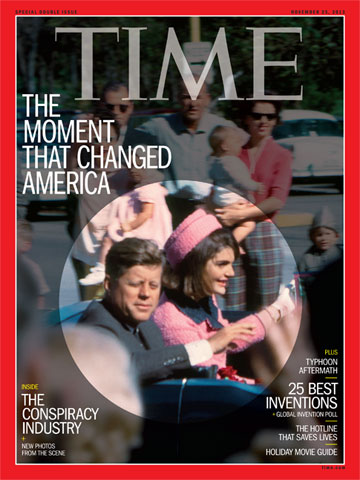
(6 of 8)
Other theories erased Oswald's role altogether. The murder, in these scenarios, was plotted and carried out by right-wing forces, who then framed the Marxist Oswald as a final fillip to their evil plans. He was, after all, such an easy man to make a patsy of, blundering into view of the FBI and CIA as he tried pathetically to make a home in Russia or befriend the Cubans. When it came time to kill the President in Dallas, they simply pinned the crime on the sad sack.
Against these seductive theories, what did the authorities offer? Only the hasty work of a blue-ribbon commission of leading figures from the government, led by Chief Justice Earl Warren. The membership of the Warren Commission virtually screamed whitewash to those who believed that the murder was a coup. They noted the presence of the powerful segregationist and Johnson mentor Senator Richard Russell of Georgia on the panel. And longtime CIA chief Allen Dulles--whom Kennedy had held partly responsible for the disastrous attempt to invade Cuba at the Bay of Pigs. And Ford Foundation chairman John McCloy, the epitome of the American establishment.
Lawyer Mark Lane led a vigorous criticism of the panel that inspired international skepticism about the official investigation even before its work was done. Bertrand Russell, the aged and esteemed philosopher, recruited other prominent figures on the British left to form a Who Killed Kennedy? Committee. When the official report of the Warren Commission was published in September 1964, it contained enough errors and inconsistencies to fuel the conspiracy bandwagon. Lane quickly answered the commission with a sprawling book titled Rush to Judgment, which spent more than half a year on the New York Times best-seller list. Within a short time, polls found that as many as 2 out of 3 Americans did not believe the Warren Commission.
THE SCIENCE OF SKEPTICISM
"Sunlight is said to be the best of disinfectants," Justice Louis Brandeis once wrote. But that has not been true in the case of the Kennedy assassination. The release of more and more information has only fed the growth of the conspiracy theories. For every fact, it seems, there is another question, or sheaf of questions. The history of the Zapruder film is a good illustration.
After the murder, the dressmaker sold the rights to his movie to LIFE magazine with one condition: the gruesome sequence at frame 313 must not be made public. But later in the 1960s, the mercurial district attorney in New Orleans, Jim Garrison, attempted to prove that the assassination was hatched in his city by a group of men who may (or may not) have known each other through activities connected (or not) to the CIA. Garrison's ultimate prosecution of Clay Shaw--the only time anyone has been tried for crimes related to the killing of Kennedy--was a fiasco in conventional terms. Jurors acquitted the businessman in less than an hour. But as part of his flimsy case, Garrison subpoenaed the complete film, and from his hands it did not take long to reach the public. Today, anyone with a computer can see, through Zapruder's lens, exactly what happened in Dealey Plaza.
